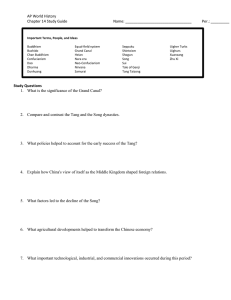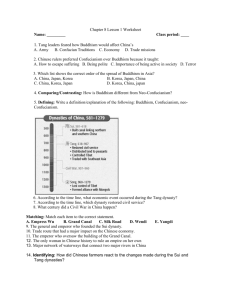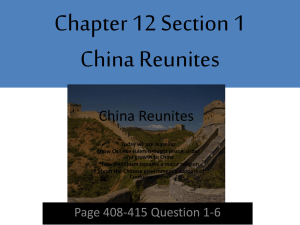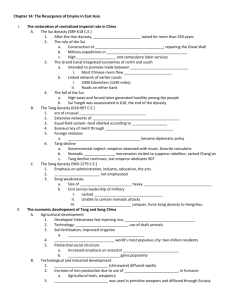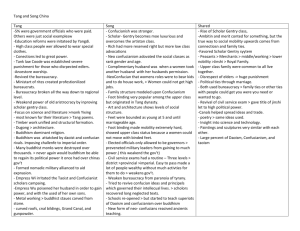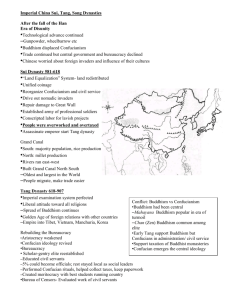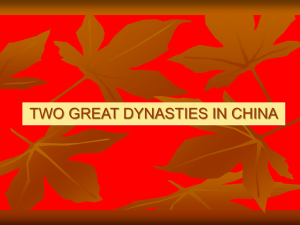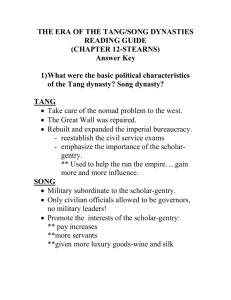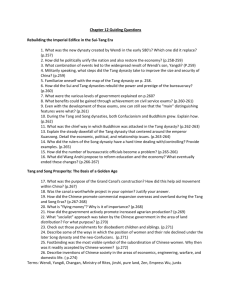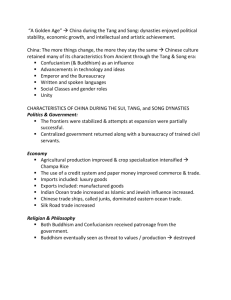Chinese Reunification & Renaissance: Dynasties & Influences
advertisement
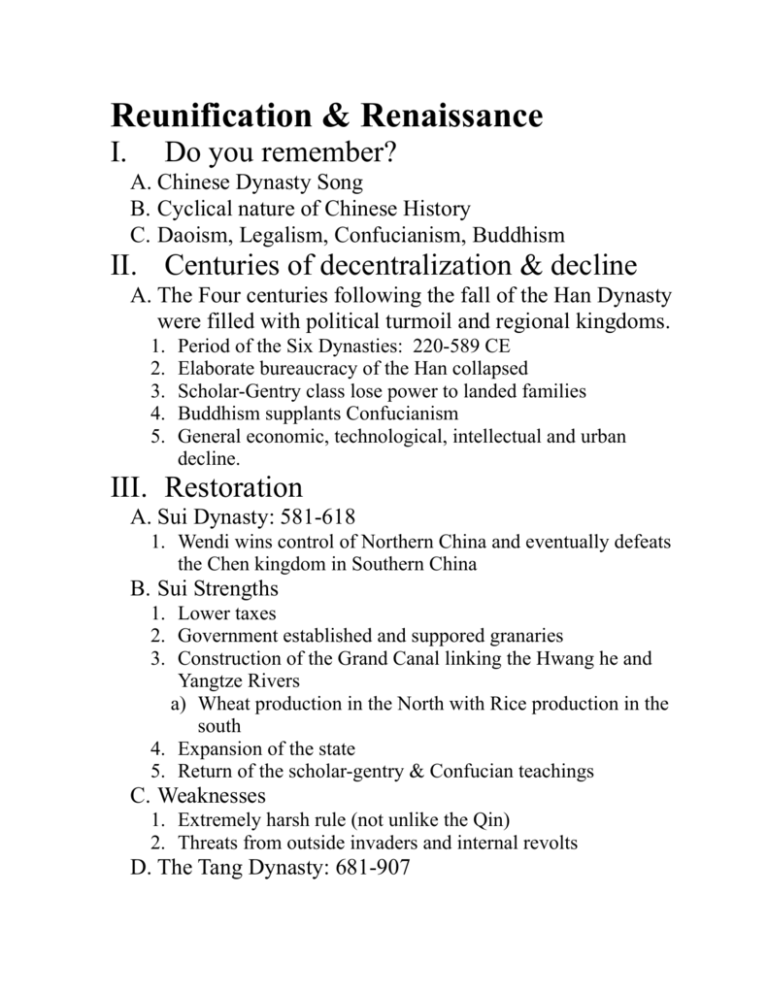
Reunification & Renaissance I. Do you remember? A. Chinese Dynasty Song B. Cyclical nature of Chinese History C. Daoism, Legalism, Confucianism, Buddhism II. Centuries of decentralization & decline A. The Four centuries following the fall of the Han Dynasty were filled with political turmoil and regional kingdoms. 1. 2. 3. 4. 5. Period of the Six Dynasties: 220-589 CE Elaborate bureaucracy of the Han collapsed Scholar-Gentry class lose power to landed families Buddhism supplants Confucianism General economic, technological, intellectual and urban decline. III. Restoration A. Sui Dynasty: 581-618 1. Wendi wins control of Northern China and eventually defeats the Chen kingdom in Southern China B. Sui Strengths 1. Lower taxes 2. Government established and suppored granaries 3. Construction of the Grand Canal linking the Hwang he and Yangtze Rivers a) Wheat production in the North with Rice production in the south 4. Expansion of the state 5. Return of the scholar-gentry & Confucian teachings C. Weaknesses 1. Extremely harsh rule (not unlike the Qin) 2. Threats from outside invaders and internal revolts D. The Tang Dynasty: 681-907 1. Founded by Li Yuan 2. Expansion into Manchuria, Mongolia, Tibet, Vietnam and Korea 3. Ultimately the size of the empire and weak leadership would be its downfall as local warlords gain strength. E. Tang influence 1. Repairing the Great Wall 2. Continued strengthening of the Scholar Gentry & Confucianism 3. Weakened aristocracy/Strengthened bureaucracy 4. Enhanced examination system increasing the numbers of the scholar gentry. IV. Religion A. Buddhism gained influence in China prior to the rise of the Tang/Song Era 1. Mahayana/Pure Land Buddhism & Zen Buddhism 2. Buddhist growth opposed by Confucians and Daoists as an ‘alien faith’ 3. Opposition during the Tang dynasty would replace Buddhist influence with Confucianism as the central Chinese ideology. a) Tax expemt status of Buddhist monesteries caused them to be a target of bureaucratic action. 4. High point of Buddhism during the reign of Tang Empress Wu 5. Following her rule, Neo-Confucians re-established Confucian ideals with emphasis on rank, obligation and rituals 6. Reinforcement of gender and age distinctions a) Male dominance B. Decline of the Tang/Rise of the Song 1. 2. 3. 4. Weak leadership Strengthening independence from regional governors Nomadic incursions Economic/Peasant Revolts V. Song Dynasty (960-1279) A. Never as politically or militarily as strong as the Tang 1. Unable to defeat northern nomads in Manchuria 2. Slowly chipped away by nomadic states (eventually falling to the Mongols) VI. Chinese Golden Ages A. Expansion of art, science, architecture, philosophy, crafts, poetry, technology B. Centuraies of relative stablity 1. Strong meritocratic bureaucracy based on Confucian Civil service exams C. Transportation, trade, economics, urban growth, agricultural expansion, inventions :navigation improvements, paper, printing
